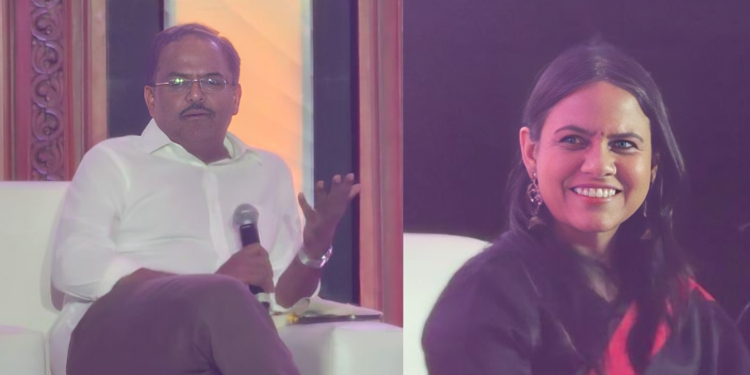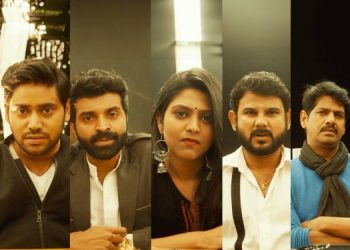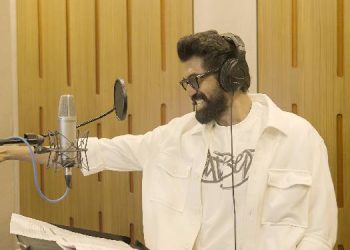At the X Factor – Yi Learning Conclave held at Le Meridien, Coimbatore, Aparna Purohit, the CEO of Aamir Khan Productions and former Head of India & SEA Originals at Amazon Prime Video, shared her inspiring journey in a discussion with Anup Chandrasekharan, COO of Regionals at IN10 Media. She talked about balancing creative freedom with corporate constraints, her process for selecting impactful stories, and how she curates content for diverse regional markets. Aparna also highlighted memorable characters, unusual shooting incidents, and the evolving relationship between traditional and digital media. She concluded by exploring future trends in storytelling and how professionals from various industries can contribute to the growth of the Media & Entertainment sector.
Excerpts
Anup Chandrasekaran: You’ve mentioned that starting your own film production company was a challenging experience. Can you tell us more about those early struggles?
Aparna Purohit: It was incredibly tough. In this industry, you often have to open your own doors, and if there’s no chair, you drag one and find your place at the table. People weren’t forthcoming. I started my own production company, but it failed miserably. Everyone who promised to support me when I went independent just evaporated. There was nobody to listen to the stories I was developing. I vowed that if I ever got into a position of influence, I would give people the chance to pitch their stories because it takes so long to develop a story. The least we can do is listen.
Anup: You’ve worked on successful shows like Family Man, Paatal Lok, Mirzapur, Made in Heaven, and more. What have you focused on when developing these projects?
Aparna: It’s always been about chasing good stories and staying authentic. Along the way, I’ve worked hard on representation, especially diversity, equity, and inclusion. As a young woman, I faced multiple challenges, so I wanted to make it easier for others. When I joined Amazon Prime India, I mandated that every writer’s room for all our shows must include a woman. Initially, there was pushback—some said it was tokenism. But I stood firm, saying, “No woman, no green light.” Eventually, people came around, and we made significant progress in increasing diversity in our teams.
Anup: What challenges did you face in ensuring diversity in these writer’s rooms?
Aparna: Many filmmakers claimed they couldn’t find women writers, so we provided them with a list of 40 young women writers graduating from film schools. We also worked hard to ensure that women received proper credit for their contributions. Beyond gender diversity, we focused on representing other marginalized groups, like the LGBTQIA+ community. For example, Made in Heaven was one of the first shows to feature a protagonist from the LGBTQIA+ community portrayed in a realistic, respectful way. We also made sure that Paatal Lok featured a transgender character portrayed authentically.
Anup: You’ve spent a lot of time in the corporate side of the creative business. How do you balance creative freedom with corporate constraints?
Aparna: With freedom comes a lot of responsibility. The key is ensuring that your creative vision aligns with the business goals of the organization. You can’t simply say, “I love this film,” if you’re unsure if it will succeed. It’s important to keep your ears to the ground, know the pulse of your audience, and align your creative goals with the company’s objectives. I often told my team, “Alignment, alignment, alignment.” It’s critical to align creativity with business, especially in a corporate environment.
Anup: What’s your view on government interference and content regulation in the OTT space?
Aparna: Over the last eight years, we’ve witnessed a renaissance of Indian content. The diversity of stories is amazing. Of course, we must align with the law of the land, but the last eight years have been magical in terms of the variety of content we’ve been able to produce. Guidelines are in place to ensure that content is responsible and doesn’t offend, but the creativity and freedom to tell diverse stories are still very much present.
Anup: You’ve faced backlash, such as with Tandav. How did you handle that experience?
Aparna: That was a difficult time. An FIR was filed, and we had to go to the police station, with the case even reaching the Supreme Court. These experiences teach you a lot. One important lesson is that one person’s freedom fighter can be another person’s rebel, so we have to be responsible and sensitive to various viewpoints. But even during those challenges, my focus was on getting back to telling stories.
Anup: What’s the riskiest project you’ve greenlit so far?
Aparna: Every project is a risk, honestly. From hearing the initial idea to the time it’s on screen, it’s a year-long process, and anything can go wrong. But if I had to name one, Four More Shots has faced a lot of opposition internally. People thought it was a niche show focused on four urban women, and they didn’t believe it would resonate. But three seasons later, it’s a big success, and what surprised me was how much men loved the show too!
Anup: Talking about the Media industry as a whole. Do you think people have stopped going to theatres with the rise of OTT?
Aparna: I don’t think people have stopped going to theatres at all. India is an “and” country—we consume content from multiple platforms. Theatres, television, OTT—it’s all “and,” not “or.” People have an appetite for content, whether it’s going out with family to watch a movie in theatres or watching something at home on their iPad. The market is fragmented, and we are fighting for people’s attention, but it’s about offering the right content. Theatrical business will continue to thrive, but OTT has also made a huge impact.
Anup: There’s often talk about a north-south divide in Indian cinema, with some saying South Indian films are stronger in theatres while the North struggles. Do you agree with that?
Aparna: I don’t believe in that divide. Indian content as a whole is rich with stories, and in the last few years, content has transcended regional barriers. Language, ethnicity, region—these have become less important. Look at the success of Tamil shows like ‘Suzhal’ or Telugu content like ‘Modern Love Hyderabad’ and ‘Modern Love Chennai’. Great stories can come from anywhere, and we’re seeing that across the board.
Anup: Where do you see Indian storytelling heading in the future?
Aparna: I think we’re living through a golden age for Indian storytelling. Look at films like Mungia or Lapata Ladies—small, powerful stories that resonate with audiences. It’s a time when all kinds of stories can coexist, and all kinds of films can coexist. The north-south divide is no longer relevant. It’s really about the story, and whether it’s from a small town or a big city, if the story resonates, it will find its audience. Today, content is traveling not only across India but globally, thanks to subtitles and dubbing. This is the time for diverse, unique stories to flourish, and I think that’s where Indian storytelling is heading—toward a future where the boundaries are limitless.
Anup: Finally, how do you think people can contribute to the growth of the creative economy in India?
Aparna: By being engaged and supporting great content! Whether it’s watching films, OTT shows, or going to the theatres, people can contribute by appreciating and promoting quality content. I’d also encourage passionate people to join the industry. Some of the brightest writers and directors started out in completely different fields, like engineering. So if you have the passion for storytelling, there’s always room for you in this industry.

















